Plush Teddy Bear Beautiful 2024
$19.99
Teddy Bear material information:
Our teddy bear is crafted from premium-quality, ultra-soft plush fabric that is both durable and gentle against the skin. The bear’s stuffing is made from hypoallergenic, eco-friendly polyester, ensuring it is safe for children of all ages. The combination of these high-quality materials guarantees that the teddy bear is not only incredibly soft and huggable but also long-lasting, making it a perfect companion for years to come.
Soft and cuddly teddy bear, perfect for kids.
Plush Teddy Bear
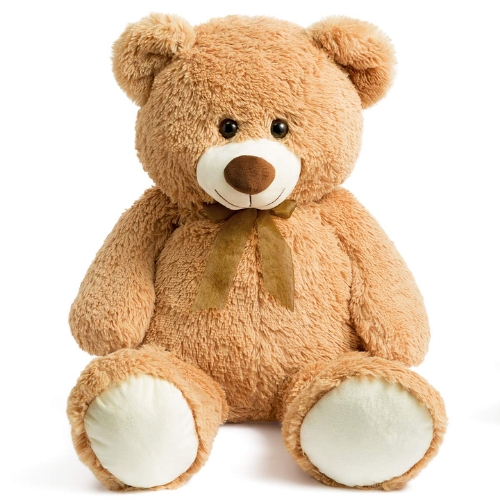
The Timeless Charm of Teddy Bears: A Comprehensive Introduction
For over a century, teddy bears have been cherished companions, beloved by children and adults alike. Their enduring appeal lies in their comforting presence, adorable design, and the nostalgic memories they evoke. This article delves into the history, design, materials, and cultural impact of teddy bears, exploring why they remain such an integral part of our lives.
A Brief History of the Teddy Bear
The teddy bear’s origin story is both fascinating and heartwarming. It dates back to the early 20th century, with two parallel stories of creation in the United States and Germany. In the United States, the teddy bear was inspired by an incident involving President Theodore Roosevelt. In 1902, Roosevelt was on a hunting trip in Mississippi when he refused to shoot a captured bear, deeming it unsportsmanlike. This act of compassion was immortalized in a political cartoon by Clifford Berryman, which in turn inspired Morris Michtom, a Brooklyn-based shop owner, to create a stuffed bear and name it “Teddy’s bear.” The toy quickly became popular, and thus, the teddy bear was born.
Simultaneously, in Germany, Richard Steiff, a toymaker for the Steiff Company, designed a plush bear based on the real bears he observed at the zoo. The Steiff bear made its debut at the 1903 Leipzig Toy Fair and garnered significant attention, eventually finding its way to the United States. These two stories mark the beginning of the teddy bear’s journey into becoming a beloved global icon.
The Design and Appeal of Teddy Bears
The classic teddy bear design has evolved over the years, yet certain elements remain constant: a round face with a snout, button eyes, and jointed limbs. These features give teddy bears their characteristic charm and make them instantly recognizable. Modern teddy bears come in various shapes, sizes, and colors, catering to a wide range of preferences and occasions.
One of the key aspects of a teddy bear’s appeal is its expression. Often designed with a neutral or slightly smiling face, teddy bears have a way of appearing both friendly and comforting. This subtle expression allows teddy bears to be versatile companions, suitable for comforting a child, symbolizing love and affection, or even serving as collectibles for enthusiasts.
The Materials Behind the Magic
The materials used in making teddy bears are crucial to their softness, durability, and overall quality. Traditionally, teddy bears were made from mohair, a fabric made from the hair of the Angora goat. Mohair is prized for its durability, sheen, and soft texture, making it an ideal material for high-end teddy bears. However, mohair can be expensive, leading to the use of alternative materials in modern manufacturing.
Today, most teddy bears are made from synthetic plush fabrics, which offer similar softness and durability at a lower cost. These fabrics are often polyester-based and come in a variety of textures and colors. The stuffing, or filling, of a teddy bear is another critical component. High-quality teddy bears are typically filled with hypoallergenic polyester fiberfill, which is soft, lightweight, and safe for children. Some bears may also be filled with pellets or beans to give them a more substantial weight and a poseable quality.
Teddy Bears in Popular Culture
Teddy bears have a significant presence in popular culture, appearing in literature, film, and even as brand mascots. One of the most famous teddy bears is Winnie-the-Pooh, created by A.A. Milne. The stories of Winnie-the-Pooh and his friends in the Hundred Acre Wood have captivated generations of readers and viewers, solidifying the teddy bear’s place in literary history.
In film, teddy bears have often been depicted as loyal companions and symbols of childhood innocence. The character of Ted, from the movie “Ted,” presents a humorous and adult-oriented take on the teddy bear, showcasing the versatility of this beloved toy. Additionally, teddy bears are frequently used in advertising and branding, with iconic examples like the Snuggle Bear for Snuggle fabric softener and the Coca-Cola polar bears.
Collecting Teddy Bears: A Hobby and Passion
For many, collecting teddy bears is more than just a hobby; it is a passion. Teddy bear collectors, known as arctophiles, seek out bears from specific brands, eras, or designers. Some collectors focus on vintage bears, which can fetch high prices at auctions due to their rarity and historical significance. Brands like Steiff, Merrythought, and Hermann are highly sought after in the collector community.
Collectible teddy bears often come with unique features, such as limited edition releases, artist designs, and special materials. These bears are typically more expensive than standard teddy bears, reflecting their craftsmanship and exclusivity. Collectors often display their bears in glass cases or dedicated rooms, treating them as treasured items of art.
The Therapeutic Benefits of Teddy Bears
Beyond their role as toys and collectibles, teddy bears offer therapeutic benefits. They provide comfort and companionship, especially to children, during times of stress or anxiety. The act of hugging a teddy bear can have a calming effect, releasing endorphins and creating a sense of security.
Teddy bears are also used in therapeutic settings, such as hospitals and therapy sessions. Organizations like the Teddy Bear Project provide bears to children undergoing medical treatments, helping to alleviate their fears and provide emotional support. The simple presence of a teddy bear can make a significant difference in a child’s experience during challenging times.
The Future of Teddy Bears
As we move further into the 21st century, the appeal of teddy bears shows no signs of waning. Advances in technology have allowed for the creation of interactive and smart teddy bears, which can respond to touch, sound, and even connect to the internet. These modern bears offer new ways for children to engage and interact, blending traditional comfort with contemporary innovation.
Environmental consciousness is also shaping the future of teddy bears. Many manufacturers are now producing eco-friendly bears made from sustainable materials, such as organic cotton and recycled fabrics. These bears provide an option for environmentally-conscious consumers who want to make a positive impact while enjoying the timeless charm of a teddy bear.
Conclusion
The teddy bear, with its rich history, enduring design, and profound impact on culture and emotions, remains a beloved icon. Whether as a child’s first companion, a collector’s prized possession, or a therapeutic tool, the teddy bear continues to bring joy and comfort to people of all ages. Its timeless charm ensures that it will remain a cherished part of our lives for generations to come.

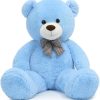
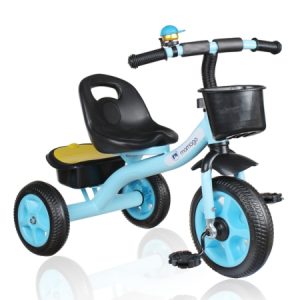

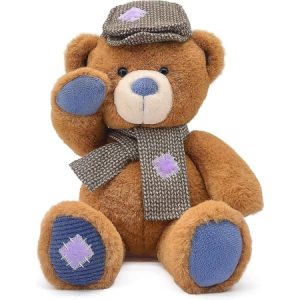
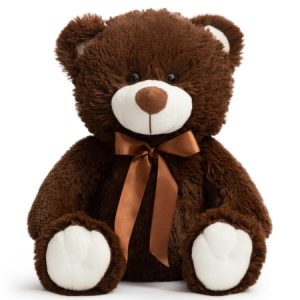




Reviews
There are no reviews yet.